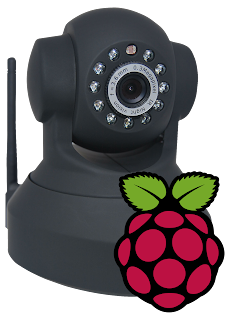
Autopilot Consulting, LLC. can NOT support mandatory drug testing. Autopilot was founded on the belief that a business could be both successful and ethical. I believe that mandatory drug testing is unethical and therefore we can not support it.
Autopilot's core values are:
Integrity above all else.
People matter
It can always be better
If it's complicated, it's too complicated
It's exactly these core values that have led me to the decision that as a policy Autopilot would not permit staff to submit to drug testing as a condition of working with Autopilot Consulting. Drug testing provides very little value to employers and can only harm employees and staff.
Drug Testing For Employers
Drug testing provides very little value to employers. Current drug tests typically address only a small subset of abused drugs, are not particularly reliable, and are widely regarded as poor predictors of on-the-job performance.
Prescription Drugs
Pre-employment drug screening often excludes legal drugs including prescription medications (when they do include prescription medications, you begin to approach the privacy concerns mentioned below). The Americans with Disabilities Act and the Equal Employment Opportunity Commission have strong guidelines to protect the privacy of those legally taking prescription medications.
These prescription medications are often abused and contribute to workplace safety concerns that are not readily addressed by common drug screening. Even when these medications are tested for, studies have found that the screening typically does not improve safety ratings.
Alcohol
Many pre-employment drug screens do test for alcohol. While these would provide valuable information in an after-incident exam, they're not particularly good at identifying people who abuse alcohol. Alcohol is detectible in urine for up to 12 hours. There are better tests for when alcohol consumption is completely prohibited, but in the typical case, if someone who is suffering with alcohol addiction can sober up for an interview, they can also sober up for a negative drug test too.
For perspective, a study in 2003 showed that people who consume alcohol on average three or more times per week had 3.2 injuries per 10,000 person-work-days vs 1.9 injuries over the same duration for non-drinkers. This 70% increase in risk is typically not predicted by pre-employment drug screens and many people don't consider this level of alcohol consumption to be heavy use.
Detection Times
Most drugs are detectible for only a few days. Marijuana can be detectible for 1 to 2 months for chronic users but is typically less than 7 days for infrequent uses. This means that drug users (except for some marijuana users) who are looking for jobs can easily pass a pre-employment drug screening by abstaining for only a few days.
Exacerbating this problem, drug tests have a 10 to 15 percent false negative rate. Some false positives are due to weaknesses in the tests, differences between the way different people metabolize drugs, volumes of water people typically consume, etc. Others are deliberate subversions of the test. While false-negatives probably have a less dramatic impact than false positives, this does greatly reduce the value of the tests in general.
Impacts of Drug Testing on Job Performance and Safety
Some studies have been able to show a relationship between drug use and job performance and safety. Many other studies fail to show any relationship. Most studies have failed to show a correlation between drug screening and job performance and safety with several researchers suggesting alternatives for safety critical positions like computer-assisted performance tests and non-punitive employee assistance programs.
The inability to test for several classes of drug abuse, the unwillingness to treat alcohol abuse with the same vigor other drugs, and the unreliability of drug screens as a predictor of performance greatly reduce the value of drug tests as a pre-screening employment qualification.
Drug Testing for Employees
Drug testing can only serve to harm potential employees. Drug tests have an unacceptably high false-positive rate, are privacy-invasive, and have been historically biased against poor and minorities.
Harmful False-Positives
While drug tests are generally unreliable as a measure of drug use in general, the false-positive rate is an alarmingly high 5 to 10 percent. That means that if I have 10 employees undergo a drug screening as a condition of a contract with an Autopilot client, one of them will likely with a documented positive drug test. It would be unethical to require my staff to subject themselves to a test with a 10% chance of harming them or their reputation.
Privacy
I have worked with and would like to continue working with people who live in (or travel to) states (or countries) where some drugs are legal. Because these drugs are also controversial, it is reasonable for someone to prefer to keep their legal activities private. If I permit some employees to submit to drug tests, I cannot protect the privacy of all of my employees.
For example, I could allow some employees an opportunity to opt out of drug tests. The problem is that through deduction, it's possible people will come to the conclusion (correctly or incorrectly) that someone is opting out of contract opportunities to hide drug use. It's less complicated and considerably more respectful of the privacy of my staff (and thus more ethical) to not permit any employees to submit to drug tests in the first place.
Disproportionate Impact on Poor and Minorities
One study, conducted by Yale University, found that 63% of black workers were employed in a workplace that performs drug testing while only 46% of white workers were. Further, 54% of blue collar employees were tested compared to only 44% of white collar workers. In further analysis, the study found that the racial discrepancy was true among executive, administrative, managerial, and financial workers as well as technician and support occupations.
Counterintuitively, the National Bureau of Economic Research found that places where drug testing is required tend to have more racial diversity. The author of the study suggests that these differences are due to biases in the hiring process because drug tests gives minority applicants an opportunity to prove counter assumptions and prove their innocence.
This is a bias that should be eliminated by ethical thinking rather than by putting a burden of proof on job applicants.The same author has found that drug testing policies tend to correlate with a decline in employment for women as well.
TL;DR
Drug testing provides very little value to employers because these tests typically address only a small subset of abused drugs, they are not reliable, and are widely regarded as poor predictors of on-the-job performance. Drug testing has no benefit to potential employees because the tests have an unacceptably high false-positive rate, are privacy-invasive, and have been historically biased against poor and minorities.
Our specialty is building amazing software that delights users. We believe in the value of people and we're always working to improve ourselves and those around us. We would be compromising our integrity if we didn't join in taking a stance against privacy violations and discrimination.
It's for these reasons that we respectfully decline any contracts where mandatory drug testing is a condition of the contract.





